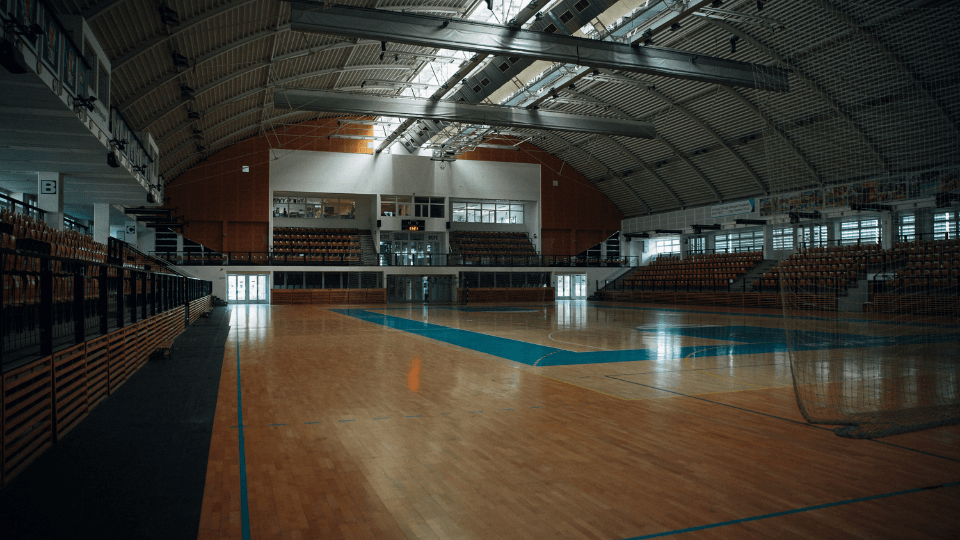One of our very favorite movements here at PLT4M, the overhead squat is a must-have in any athletic training program. We love this squat variation not for raw strength development, but primarily as a mobility, stability, balance, and body control tool.
Athletically, developing the overhead squat does wonders for core stability and positioning – much like the wall squat (squat therapy). It challenges hip and ankle mobility, while demanding a more vertical torso, and increased shoulder range of motion throughout the movement. Disassociating the shoulders/thoracic spine from the hips during a squat (keeping a vertical torso) is useful for any athlete.
The need to “Get Low” is ubiquitous in sport. If, to drop hip level, you sacrifice your entire torso by losing the lumbar curve or collapsing the chest with extreme T-spine flexion, you are surrendering your athleticism. Maintaining a proud chest and active shoulders allows the athlete to act beyond the hip descent. Eyes are up, lungs are open, shoulders are engaged and the hips can move in any direction.
It’s no surprise that the OHS is now often being used by college recruiters as a mobility test for a range of athletes, including football Offensive Linemen.
While widely beneficial, the OHS can be a difficult movement for new athletes to master – or at first, even complete (part of the reason we love it!).
When introducing the OHS, we focus on the overhead position and bar path (beyond our standard points of squat performance).
Athletes should grip the bar in a snatch-width grip and bring overhead to full lockout. We are looking for active shoulders in a “press that never ends”. Armpits should be facing forward in that externally rotated position, with elbow pits to the ceiling.
As the athlete descends into the bottom of the squat, the bar should remain over center mass. This may require some opening of the shoulder (reaching the weight back) to compensate for any forward lean of the torso. This is OK, so long as it isn’t extreme, and they bring the weight back on the way up so that the bar is always directly over the mid-foot.
Once we’ve dialed in supreme positioning, the OHS may also double as a next-level test of midline stability, balance, and full-body strength by adding load to the bar overhead. (This should only be done with experienced athletes that demonstrate perfect technique.) A weighted overhead squat is one of the most athletic blends of mobility, midline stability, full body strength, balance and body control.
Teaching the Overhead Squat
Share this article:
Recent Posts
Interested if PLT4M can work at your school?
Follow Us!
At this HS, PE students can choose from a range of fitness activities - options like weightlifting, yoga, boxing, pilates, and bootcamp. Encouraging exploration & choice, it empowers them with the skills and confidence for a lifetime of health & wellness.

Student Choice in PE Leads To School-Wide Success
How does a school increase the motivation and excitement around physical education? Hutsonville does it by empowering student choice!
hubs.li
How does a high school Physical Education department transition from primarily a games-based program to a more fitness-focused curriculum?

Fitness-Focused Phys Ed At Hammond Central
After obtaining a grant to invest in curriculum and technology, Hammond Central has seen success with fitness-focused phys ed!
get.plt4m.com
With SEL playing a more prominent role in the crafting of physical education curriculum, how do you go about addressing mental health by way of emotion?

Lesson Plans On Emotions For Middle and High School Students
We discuss the importance of teaching social-emotional development in middle and high schools and provide 3 sample lesson plans on emotions.
hubs.li
How did one high school place students, with their own personal goals and choices, at the center of the approach to Physical Education?

Student-Centered Strength And Fitness Classes
Littlestown High School in Pennsylvania is seeing the positive results of student-centered learning in Strength and Fitness classes.
hubs.li
#SHAPECleveland TODAY at 3:15pm HCC Room 1 In #Pursuit of Better. @PLT4M @FocusedFitness2 @IHTSpirit Tech tools in #physicaleducation Make them work for your students! #PLT4M #IHTSpirit #FocusedFitness #qualitype
How does a High School create a year-round strength and conditioning program that addresses the complete picture of multi-sport athletes, to the benefit of all?

Total Athletic Development at Denmark High School
Denmark High School supports student-athletes total athletic development via year-round strength and conditioning. See how.
hubs.li




